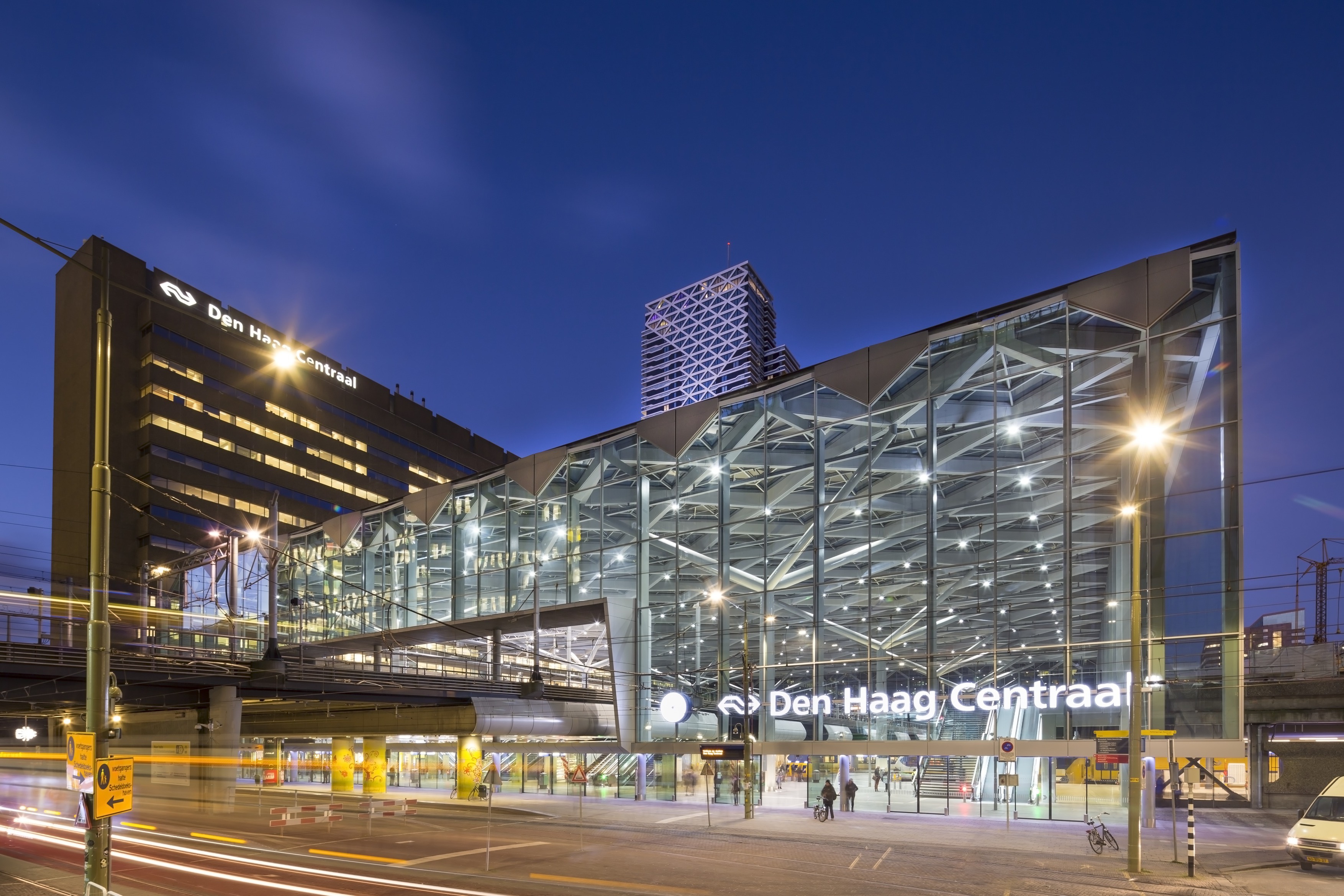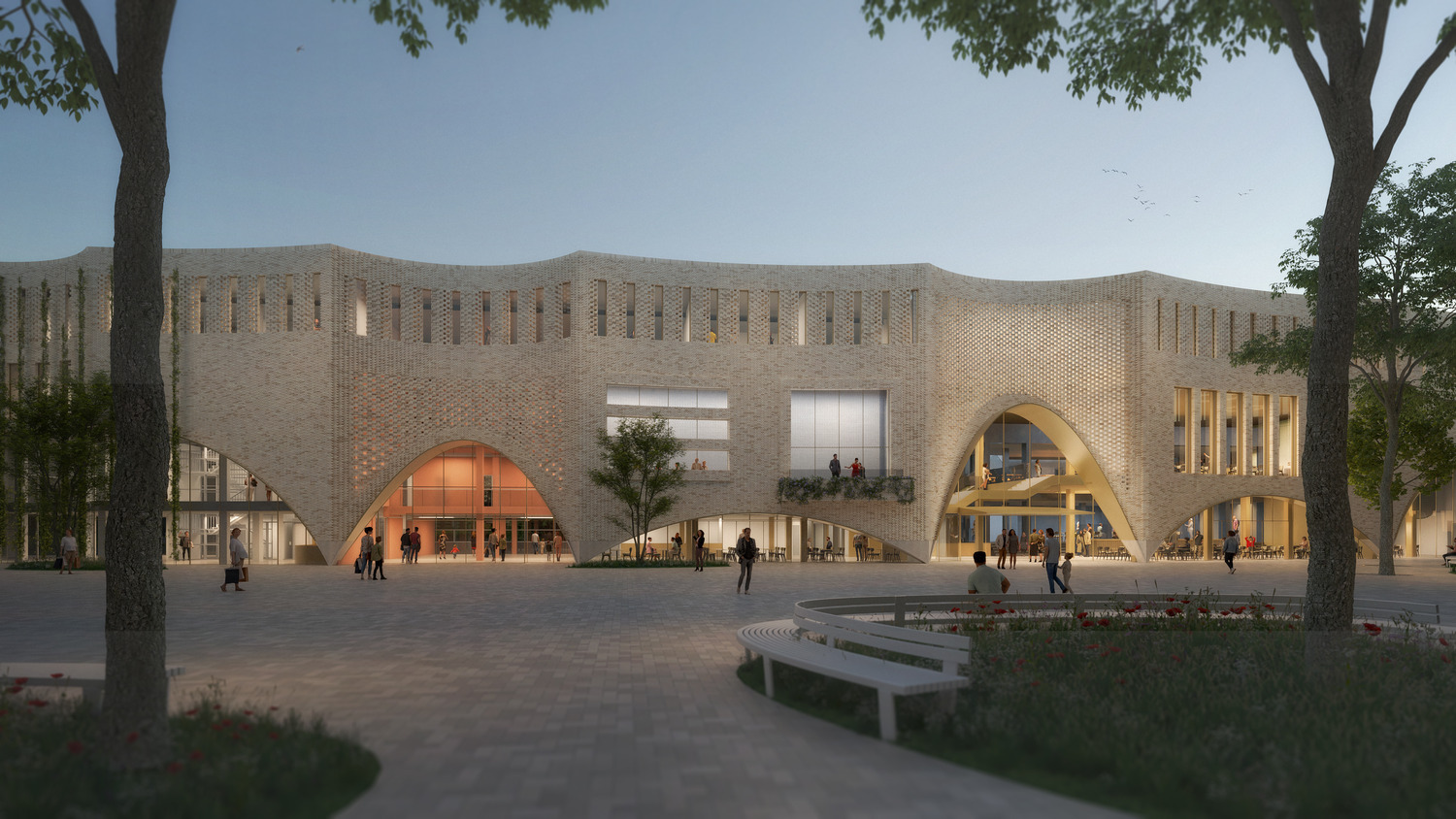Slow traffic bridge, Amsterdam
A safe and comfortable connection for all slow traffic between North and South Amstelveen.
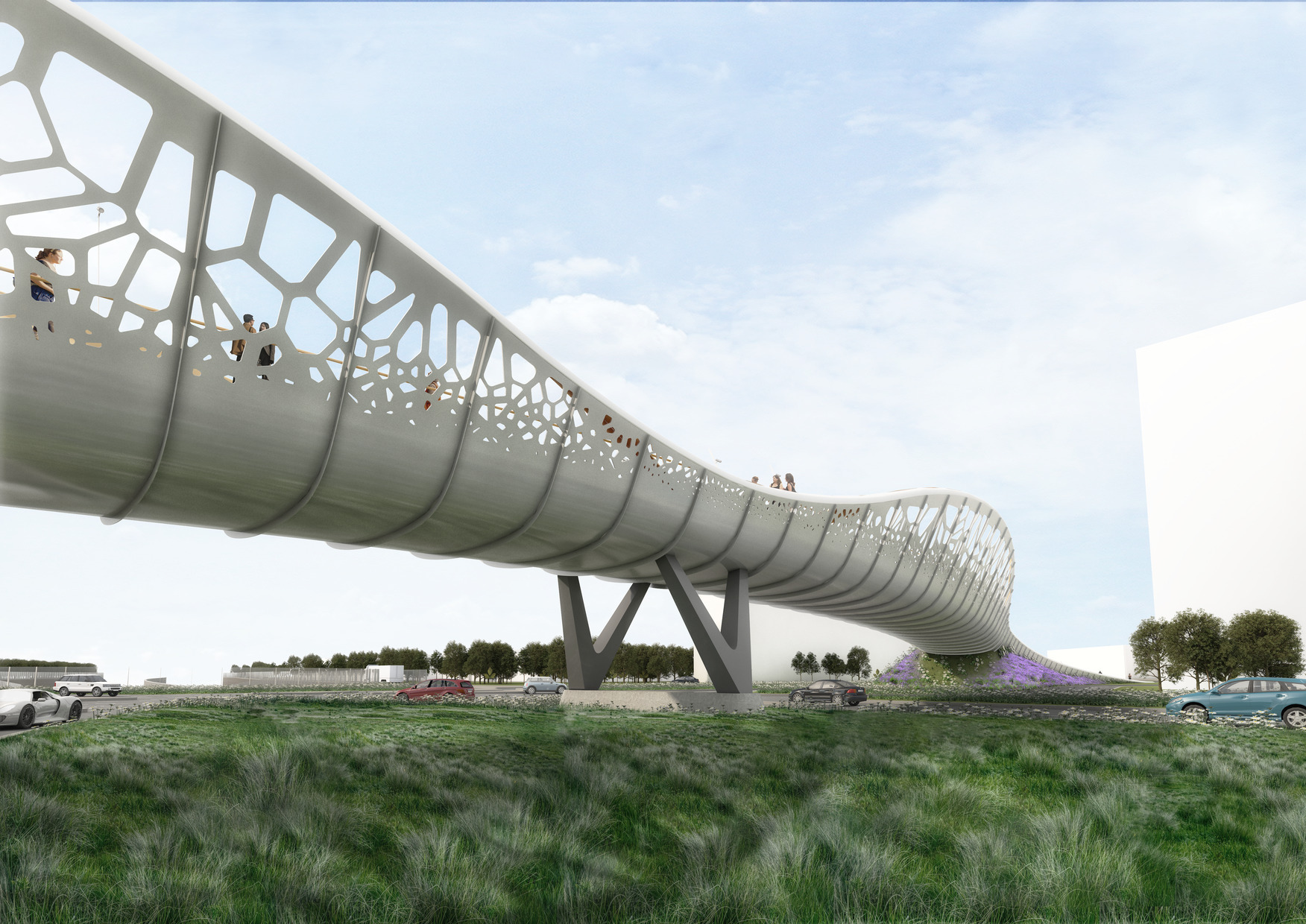
The A9 highway at Amstelveen was designed to be widened and would run through the city in a lowered position for approximately 1.3 kilometers, passing underneath the Keizer Karelweg. Above the A9, there exists a busy tangle of roads, the Traverse, where cyclists and pedestrians can no longer safely cross at grade level. This is where the new Slow Traffic Bridge was conceptualized.
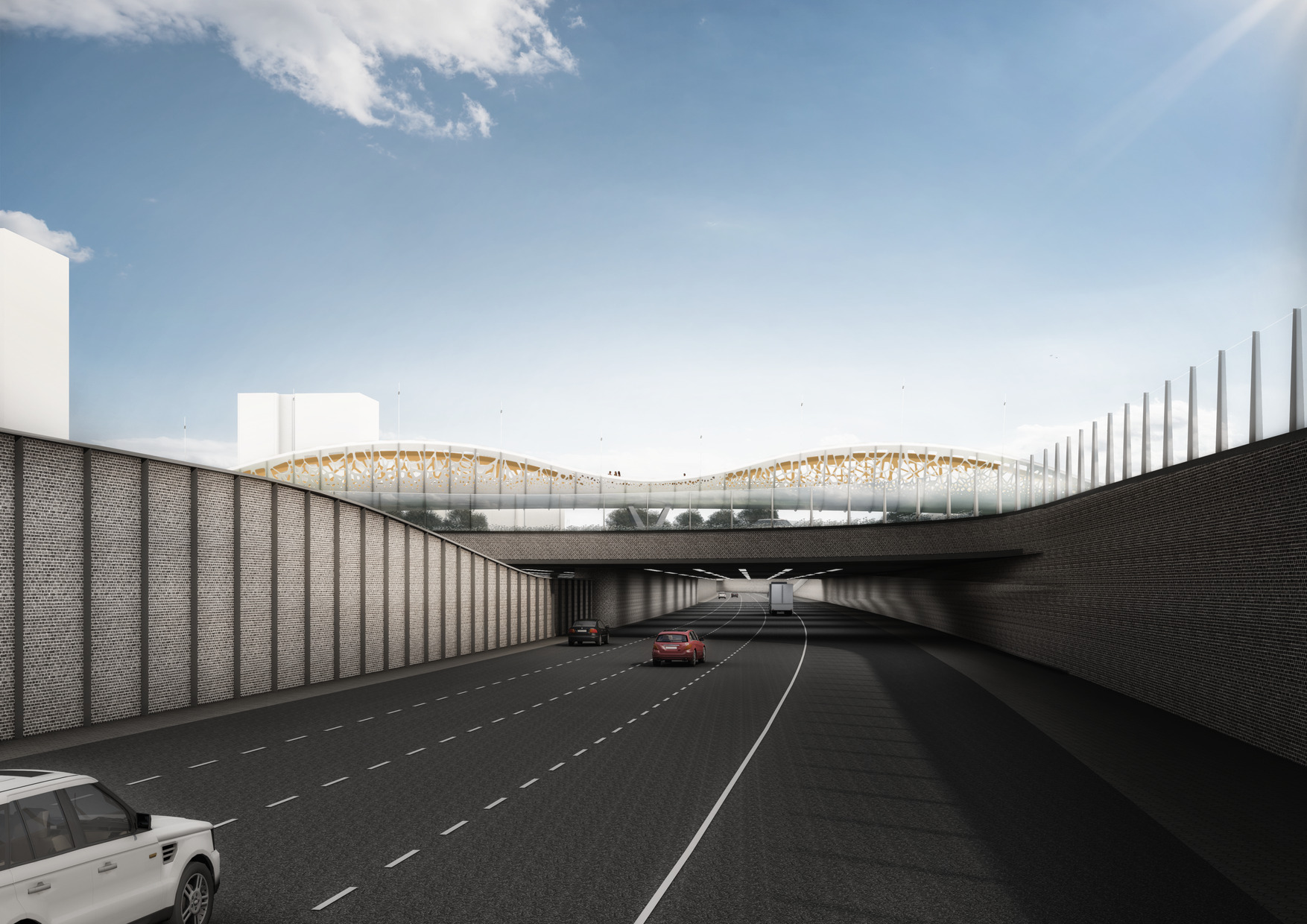
Amstelveen is characterized by abundant greenery and nature. Beautiful native parks and gardens full of rare bulbous plants literally make the municipality a "city in green." The bridge design was a translation of and reference to this character: embankments would anchor the Slow Traffic Bridge firmly in the landscape. By creating a relatively short bridge, the greenery from ground level would be drawn into the bridge structure, making it more visible from the highway.
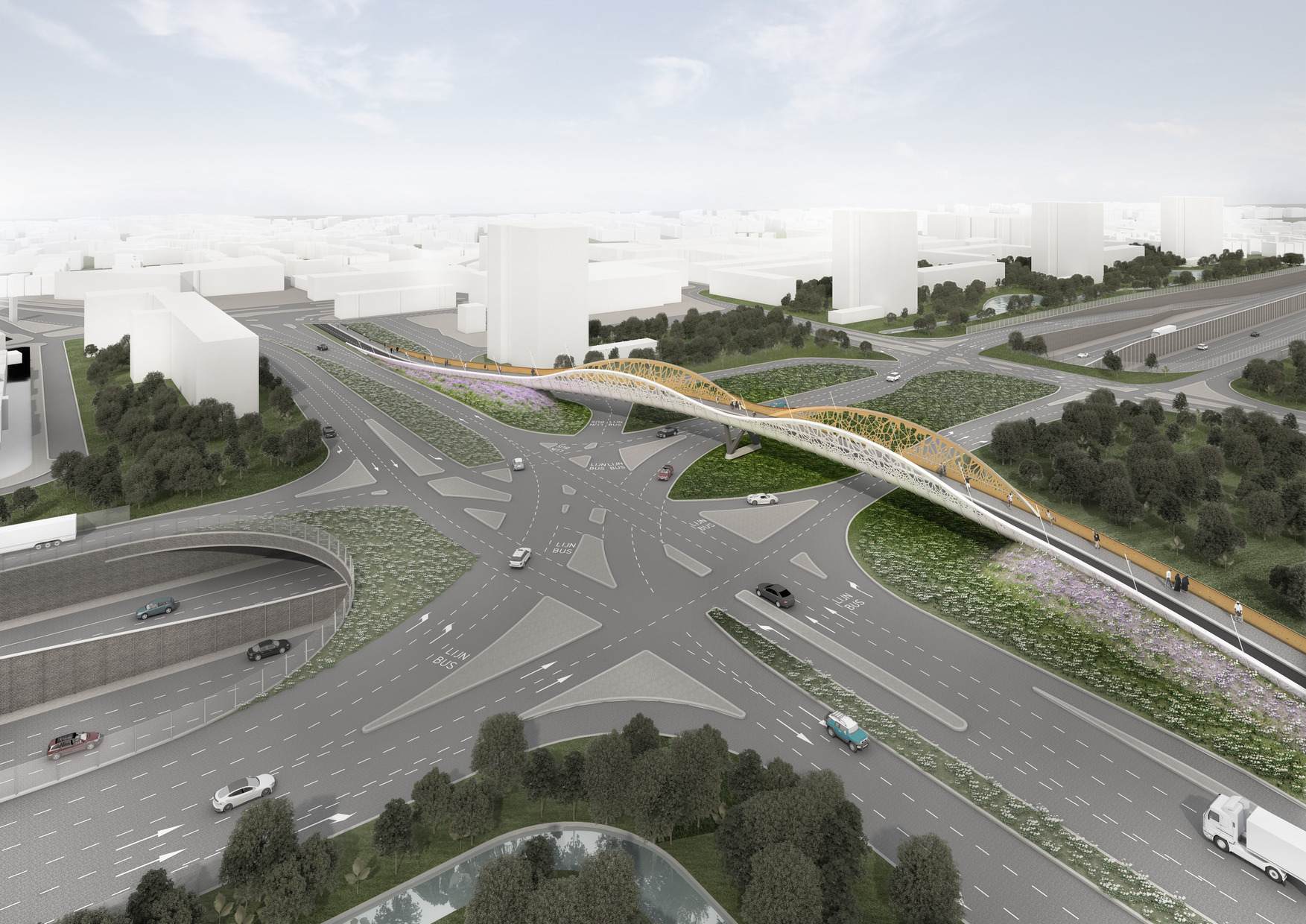
The embankments were designed to face the intersection and would be planted on the outside with a wide variety of vegetation blooming in different seasons - in each season, the green slope would display a different color explosion of flowering plants. This would give the bridge character, dynamism, and airiness.
From the embankments, two large, elegant arches on each side of the bridge would fold like curling leaves around the bridge. These "leaves" would grow toward each other above the embankments and meet above the A9 and the intersection. Toward the ends of the bridge, the arches would transition into balustrades until they reached ground level.
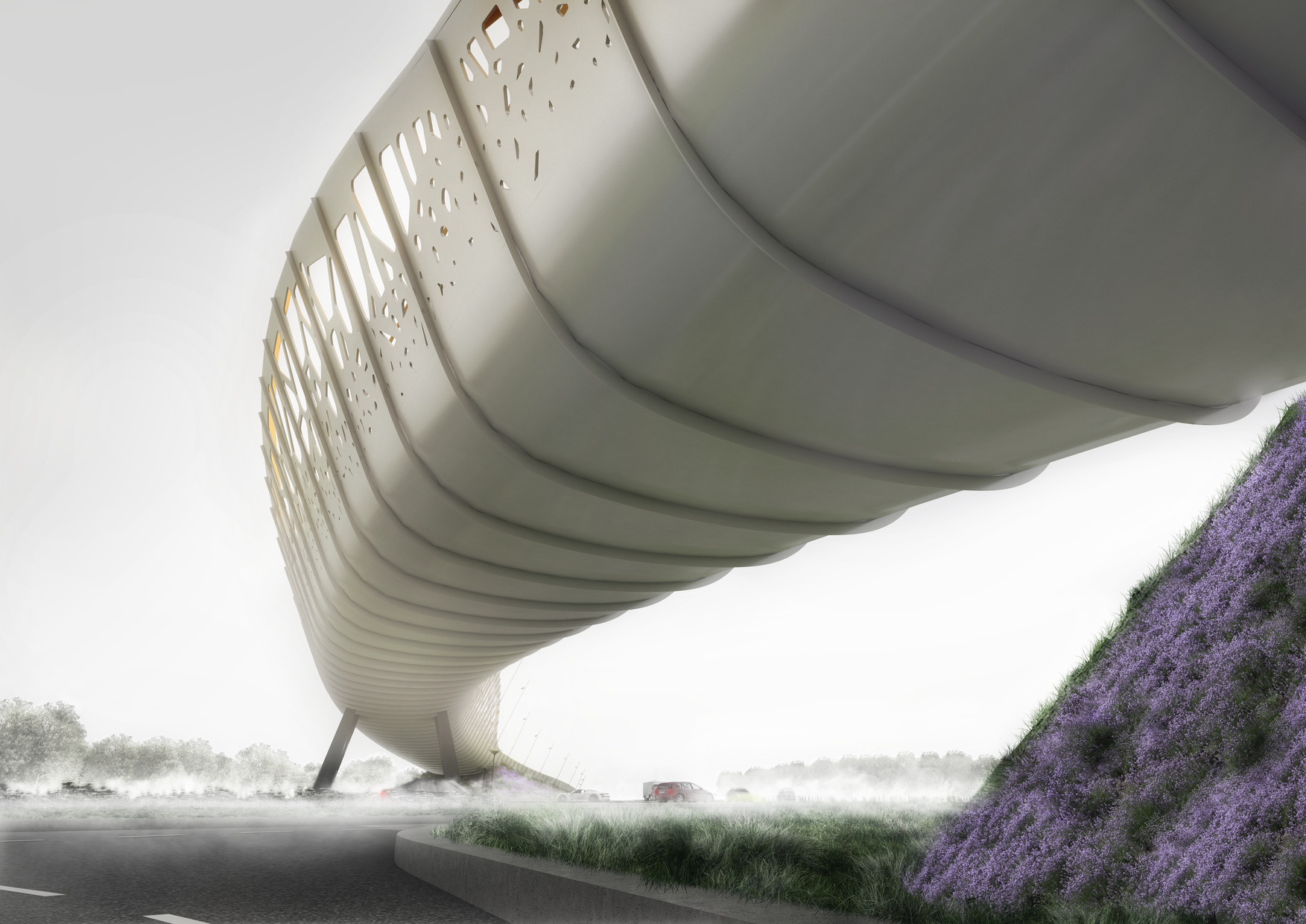
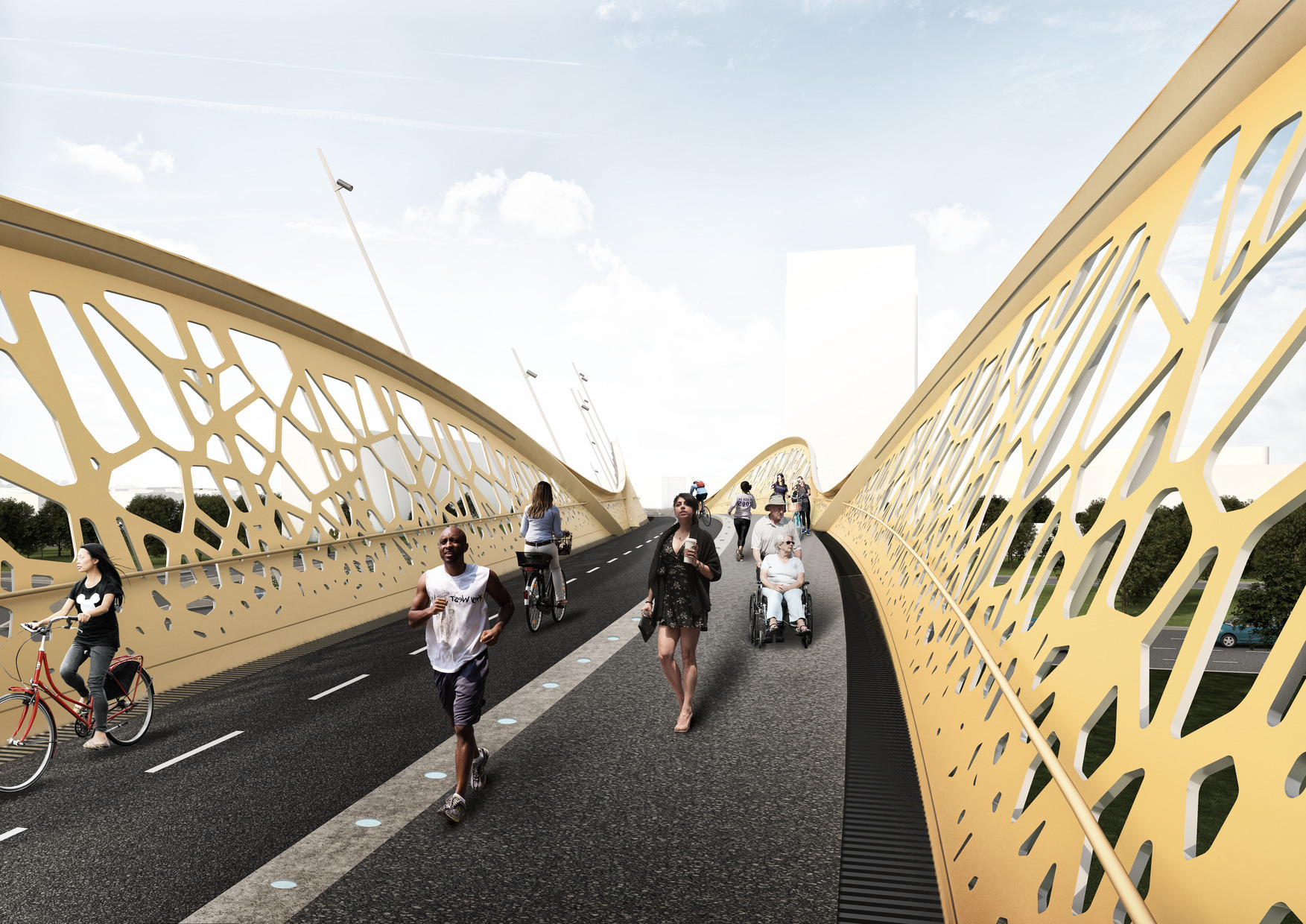
The "leaf arches" were intended to reference the calm and green municipality of Amstelveen where the streetscape is defined by trees and plants. An open, steel structure would be incorporated into the arches, inspired by the veins of a slowly drying tree leaf. The abstracted vein structure, with elements varying in thickness, was an important component of the design vision, construction, structure, and experience of the bridge.
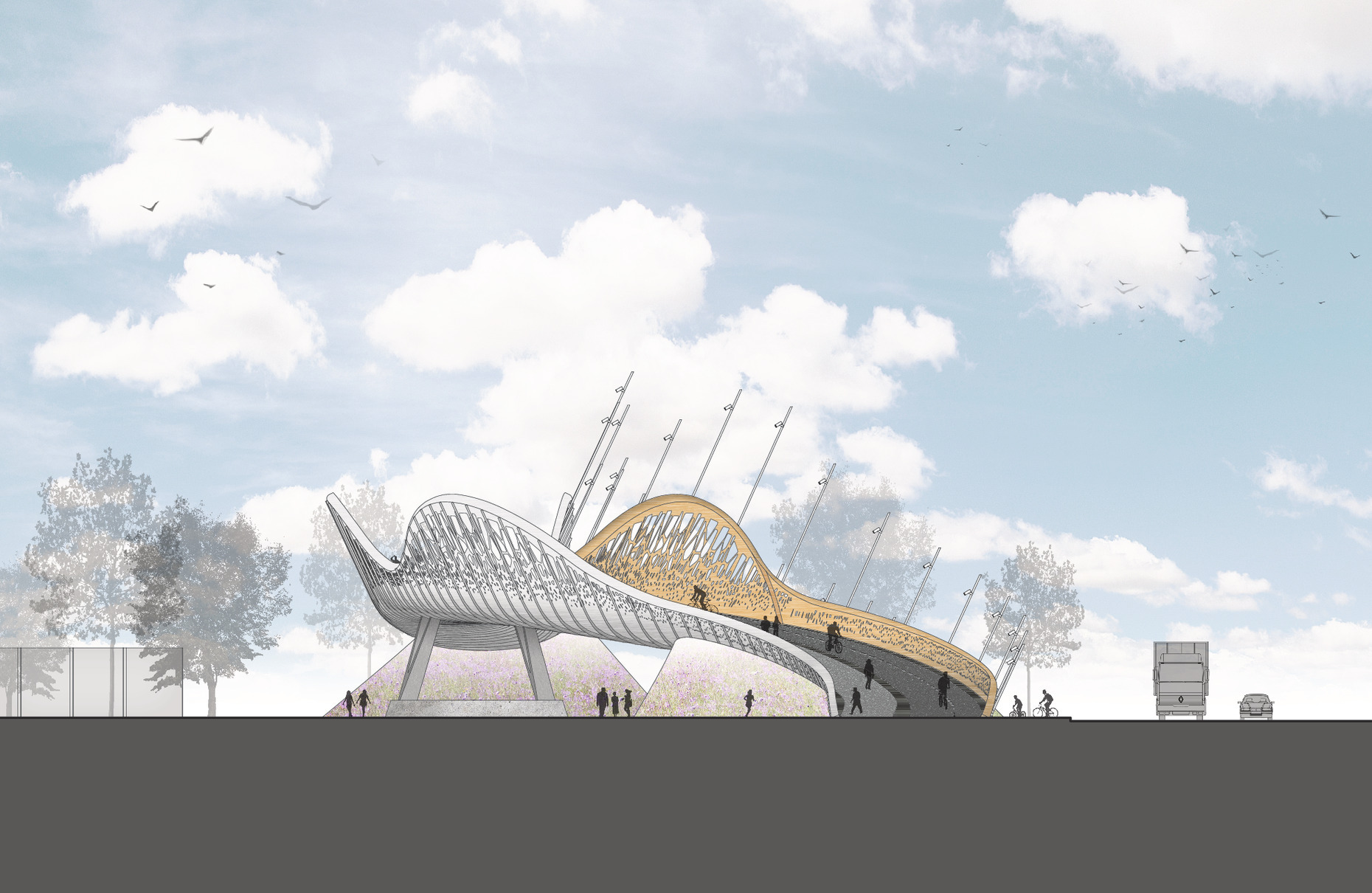
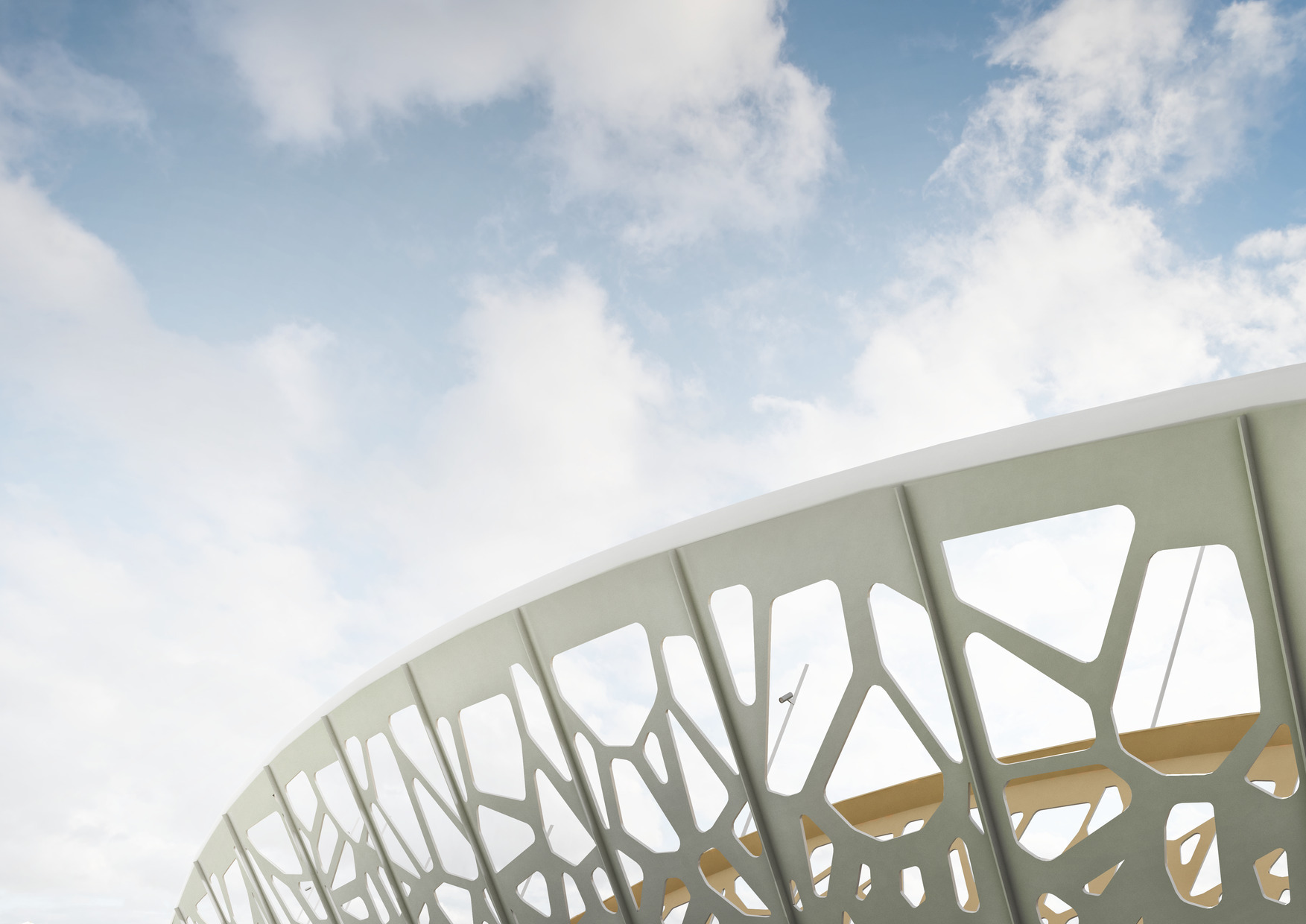
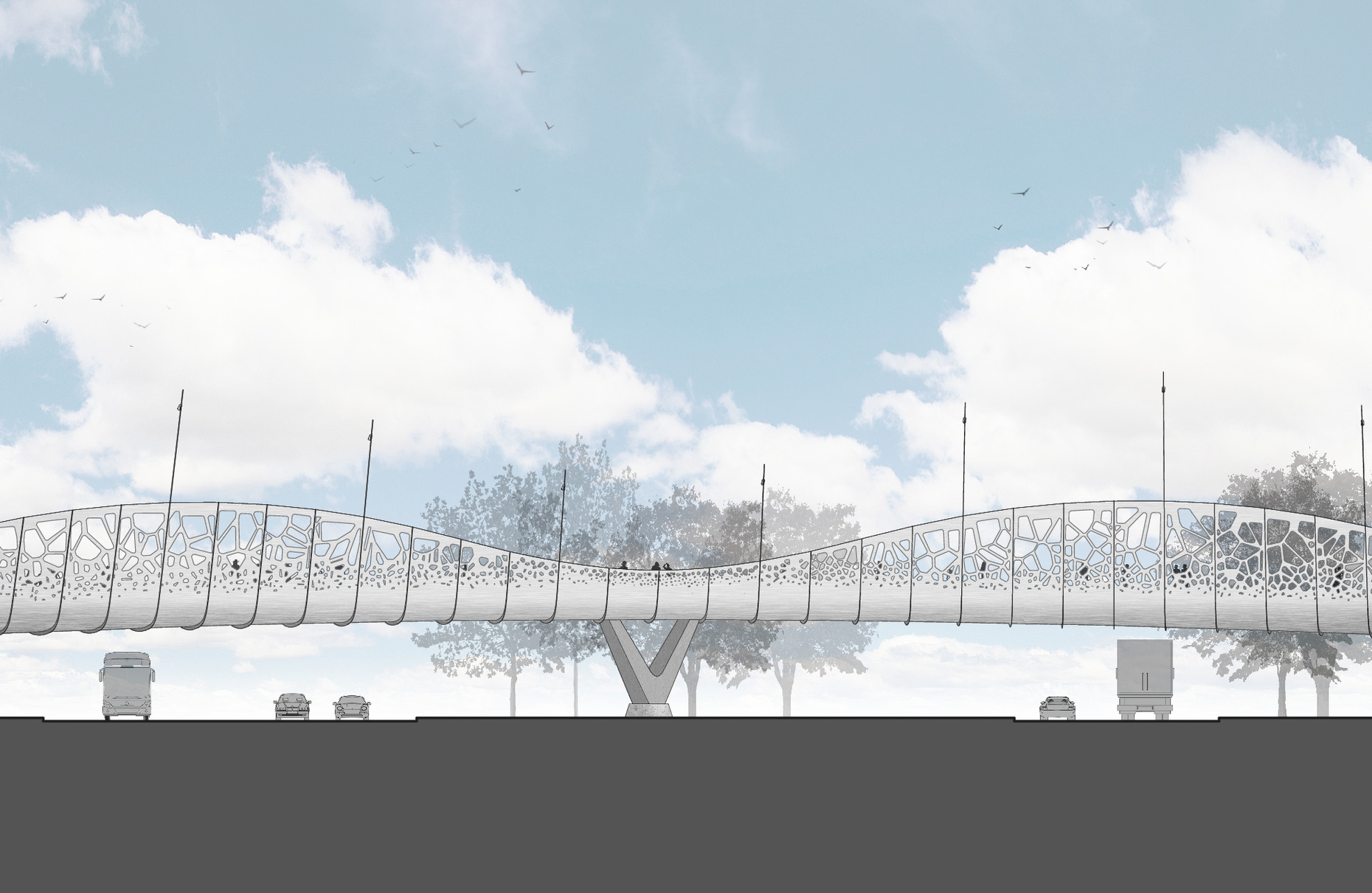
—
